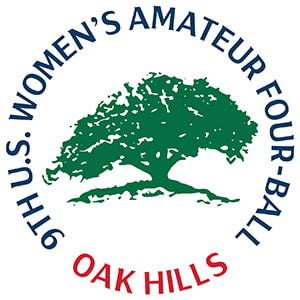Veteran’s Week?
The first eight editions of the U.S. Women’s Amateur Four-Ball have been dominated by “kids.” Six of the champions have been comprised of players who had yet to matriculate in college. The other two were college teammates, Alice Chen and Taylor Totland (Furman) and Colorado State’s Ellen Secor and Katrina Prendergast.
It’s a far cry from the men’s version of this championship, which has seen three mid-amateur champions and six runners-up.
While mid-amateurs (25 and older) have qualified for the Women’s Amateur Four-Ball, no side has even managed to reach a final. The best showing came from Alexandra Austin and 2015 U.S. Women’s Mid-Amateur champion Lauren Greenlief, who advanced in 2016 at Streamsong to the semifinals before losing to eventual champions Kaitlyn Papp and Hailee Cooper.
Could 2024 be the year?
Four sides entirely comprised of mid-amateurs have managed to qualify, with three others partnering with “younger” players. One veteran side, however, is noticeably absent: Meghan Stasi and Dawn Woodard. Stasi, the 2024 USA Curtis Cup captain and four-time Women’s Mid-Am champ, and Woodard, a three-time Women’s Mid-Am quarterfinalist, are second alternates from their qualifying site after competing in the first eight editions of this championship.
As for the mid-am hopefuls, twins Jessica and Sarah Spicer, 26-year-olds from Bahama, N.C., who played at Virginia Tech, are certainly a duo to watch. Jessica shared medalist honors in last year’s Women’s Mid-Am at Stonewall and qualified for the U.S. Women’s Amateur. This is their fourth start in the event.
North Easton, Mass., residents and fellow Thorny Lea Golf Club members Shannon Johnson, 41, and Megan Buck, 35, are the oldest side in the field. But they bring a wealth of USGA championship experience as the former won the 2018 U.S. Women’s Mid-Am and was the runner-up two years earlier. Buck captured the 2022 Massachusetts Women’s Mid-Am title by seven strokes over Johnson. This will be their third Women’s Amateur Four-Ball start, but first since 2019.
Portland, Ore., residents Gretchen Johnson, 37, and Amanda Jacobs, 35, also are making their third WAFB start. Johnson, the director of business development for a capital management company, has twice reached the semifinals of the U.S. Women’s Mid-Amateur (2018, 2023). Jacobs, the president of her family’s heating and air conditioning business, qualified for the 2018 LPGA Portland Classic.
Minnesotans Olivia Herrick, 35, of Roseville, and Samantha Sommers, 35, of Richmond, are making a fifth appearance in the championship. They qualified for the first four editions but had not qualified since 2018. Herrick, a veteran of 22 USGA championships and owner of a graphic design business, and Sommers, an admissions applications processing specialist at the University of Minnesota-Morris, reached the quarterfinals in 2016 at Streamsong.
Another “older” side to watch is Kendall Griffin, 25, of Sebring, Fla., and mid-am-in-waiting Addie Baggarly, 24, of Clarksville, Tenn. Both are assistant women’s college golf coaches – Baggarly at the University of Louisville and Griffin at Indiana University, which just claimed the Big 10 Conference title for the first time in 26 years. Baggarly played four seasons at the University of Florida and qualified for the 2021 U.S. Women’s Open, while Griffin, who played at Louisiana State and Louisville, is a two-time Florida Women’s Amateur champion.
Three Time
Not many championship layouts feature par 3s on holes nine and 18. The outward and inward nines at Oak Hills Country Club end with one-shotters that are parallel to each other. Certainly a few notable layouts have a par-3 finishing hole, namely Pasatiempo in Santa Cruz, Calif., which hosted the 1986 U.S. Women’s Amateur and 2004 U.S. Senior Women’s Amateur. Congressional Country Club in Bethesda, Md., site of three U.S. Opens, used to end with a par 3 until a renovation prior to the 2011 U.S. Open changed the layout. The par-3 18th became the 10th hole, and tee and green sites were flipped.
That is not the case at Oak Hills, which should make for an interesting finish in both stroke and match play.
Nos. 9 and 18 each play in the same direction (hole 10 stands between them), but the two will vastly differ in yardage. The ninth will be the shortest hole on the card at 143 yards with No. 18 being the longest at 188.
“Nine could be a fun birdie hole right there at the clubhouse,” said championship director Rachel Sadowski, “whereas 18 will be more challenging and players might be pleased with a par. Regardless, 18 is a fantastic finishing hole that will test a player’s nerves if the match is tied on the tee.”
David Shefter is a senior staff writer for the USGA. Email him at dshefter@usga.org.

















